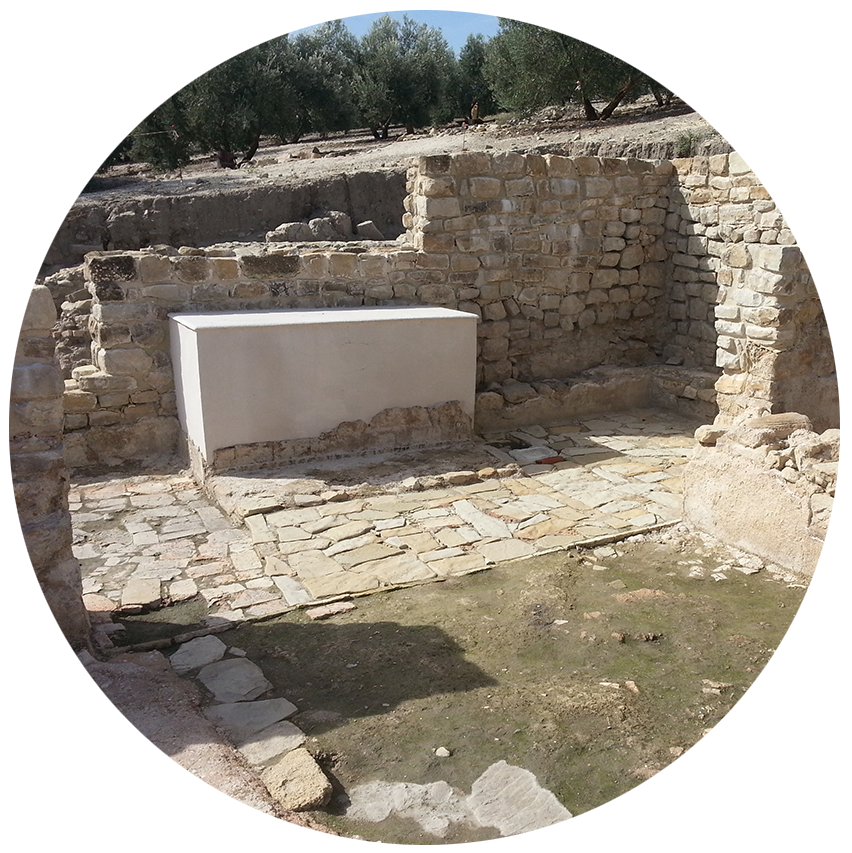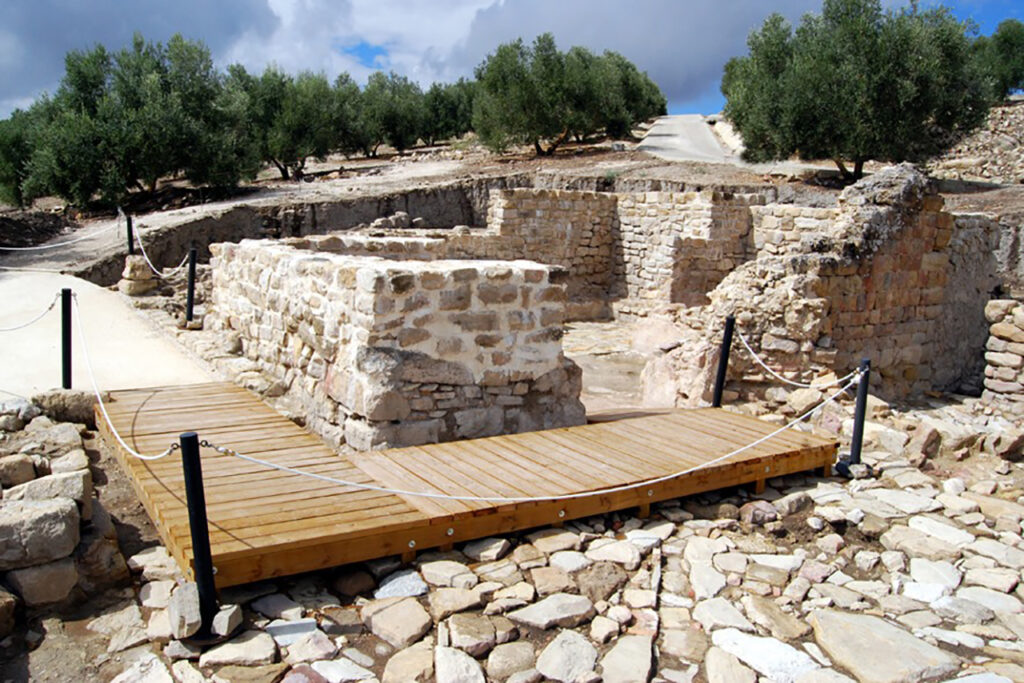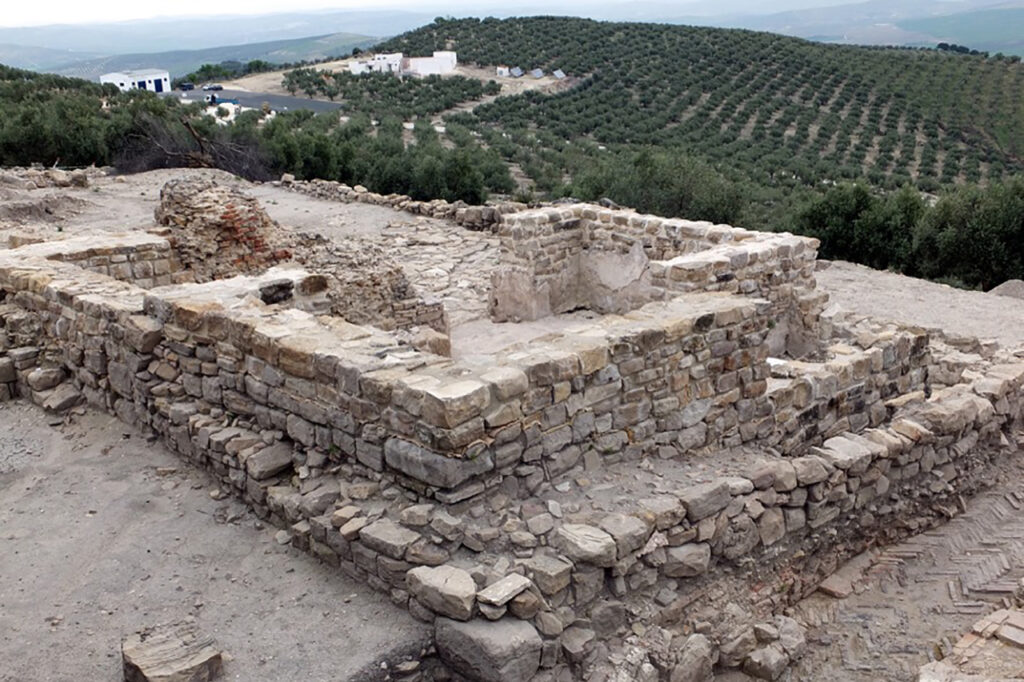
Hermitage of the virgins
It is a very small construction that was built on an important building from the Roman period. In 1644, the twenty-fourth knight of Córdoba Andrés de Morales y Padilla visited the site of Castro el Viejo (Torreparedones) and described the hermitage of the virgins Nunilo and Alodia with its altarpiece in which they appeared painted “next to Our Lady” and on them the scene of his martyrdom as described by Eulogio de Córdoba in his Memorial of Saints. These two young sisters, the result of a mixed marriage where the father was Muslim, belonged to the group of Mozarabic martyrs of the 9th century who died defending their faith since they followed the Christian religion that their mother professed. For contravening Muslim laws, they were sentenced by the Córdoba emir Abderramán II and beheaded on October 22, 851.
The Christian temple was built on the remains of Roman baths known as balneum calpurnianum and although the exact date of its construction is unknown, the archaeological excavation was able to document that it existed at least since the 16th century. The Lisbon earthquake of 1755 must have caused great damage since a few decades later, in 1772, the writer Bartolomé Sánchez de Feria already described it in ruins.
Although the hypothesis that it was in this place where the two saints suffered martyrdom is not entirely confirmed, it could have occurred and for that reason the hermitage was built which, together with the most prominent bastions of the castle, made Baena always This place is known as Torres de las Vírgenes.

Access to the old hermitage of the Virgins

Exterior view of the hermitage
The dhimmis or protected
After the Muslim invasion of the Iberian Peninsula in 711, the Christians in the conquered areas became dhimmis or protected, a term that encompassed Jews and Christians, who, according to the Koran, were considered “people of the Book” by basing their faith on the Torah or the entire Bible, writings considered equally sacred by Islam, which meant they deserved protection and respect from Muslims, unlike pagans. The dhimmis were subject to a series of laws that required them to pay a special tax, the jizya , and they were allowed to practice their faith as long as they did not advocate or harm Islam in any way. In this way, insults to the Islamic faith were considered blasphemies and were punishable by death. Apostasy from the Islamic faith was also considered (and is still considered) blasphemy. This included children of mixed marriages who under Islamic law are automatically considered Muslims
The hermitage of the Virgins
Located in the middle of the hill where the ancient city sits, the ruins of this small building are a clear example of the use of a previous one from Roman times, a balneum , on which the place of Christian worship was built.